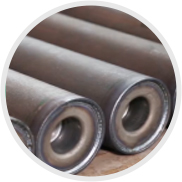 Afrikaans
Afrikaans  Albanian
Albanian  Amharic
Amharic  Arabic
Arabic  Armenian
Armenian  Azerbaijani
Azerbaijani  Basque
Basque  Belarusian
Belarusian  Bengali
Bengali  Bosnian
Bosnian  Bulgarian
Bulgarian  Catalan
Catalan  Cebuano
Cebuano  Corsican
Corsican  Croatian
Croatian  Czech
Czech  Danish
Danish  Dutch
Dutch  English
English  Esperanto
Esperanto  Estonian
Estonian  Finnish
Finnish  French
French  Frisian
Frisian  Galician
Galician  Georgian
Georgian  German
German  Greek
Greek  Gujarati
Gujarati  Haitian Creole
Haitian Creole  hausa
hausa  hawaiian
hawaiian  Hebrew
Hebrew  Hindi
Hindi  Miao
Miao  Hungarian
Hungarian  Icelandic
Icelandic  igbo
igbo  Indonesian
Indonesian  irish
irish  Italian
Italian  Japanese
Japanese  Javanese
Javanese  Kannada
Kannada  kazakh
kazakh  Khmer
Khmer  Rwandese
Rwandese  Korean
Korean  Kurdish
Kurdish  Kyrgyz
Kyrgyz  Lao
Lao  Latin
Latin  Latvian
Latvian  Lithuanian
Lithuanian  Luxembourgish
Luxembourgish  Macedonian
Macedonian  Malgashi
Malgashi  Malay
Malay  Malayalam
Malayalam  Maltese
Maltese  Maori
Maori  Marathi
Marathi  Mongolian
Mongolian  Myanmar
Myanmar  Nepali
Nepali  Norwegian
Norwegian  Norwegian
Norwegian  Occitan
Occitan  Pashto
Pashto  Persian
Persian  Polish
Polish  Portuguese
Portuguese  Punjabi
Punjabi  Romanian
Romanian  Russian
Russian  Samoan
Samoan  Scottish Gaelic
Scottish Gaelic  Serbian
Serbian  Sesotho
Sesotho  Shona
Shona  Sindhi
Sindhi  Sinhala
Sinhala  Slovak
Slovak  Slovenian
Slovenian  Somali
Somali  Spanish
Spanish  Sundanese
Sundanese  Swahili
Swahili  Swedish
Swedish  Tagalog
Tagalog  Tajik
Tajik  Tamil
Tamil  Tatar
Tatar  Telugu
Telugu  Thai
Thai  Turkish
Turkish  Turkmen
Turkmen  Ukrainian
Ukrainian  Urdu
Urdu  Uighur
Uighur  Uzbek
Uzbek  Vietnamese
Vietnamese  Welsh
Welsh  Bantu
Bantu  Yiddish
Yiddish  Yoruba
Yoruba  Zulu
Zulu conveyor guide rollers
Understanding Conveyor Guide Rollers Essential Components for Efficient Material Handling
Conveyor systems play a critical role in modern industrial operations, facilitating the movement of materials across various processes. To ensure the smooth and efficient functioning of these systems, one crucial component often overlooked is the conveyor guide roller. These rollers not only assist in guiding the conveyor belts but also significantly enhance the overall performance of the conveyor system.
The Role of Conveyor Guide Rollers
Conveyor guide rollers are designed to support and guide the conveyor belt through different sections of the conveyor system. They mitigate the risk of misalignment, which can lead to increased wear and tear on the belt and other components. By maintaining the proper path of the belt, these rollers ensure that materials are transported smoothly from one point to another without unnecessary disruptions.
These rollers are strategically placed along the conveyor line, especially around areas where the belt turns or changes direction. By doing so, they help maintain the belt's tension and prevent it from drifting off course, which can cause significant downtime and maintenance costs.
Types of Conveyor Guide Rollers
There are various types of conveyor guide rollers, each designed for specific applications. Some common types include
1. Standard Guide Rollers These are used in general conveyor applications where typical material handling is required. They are versatile and can be used in various settings.
2. Adjustable Guide Rollers These rollers feature an adjustable design, allowing operators to change the positioning as needed. This flexibility is crucial in applications where the conveyor setup may change frequently.
conveyor guide rollers

3. Heavy-Duty Guide Rollers For more demanding environments where heavier loads are transported, heavy-duty rollers provide the necessary support and durability. They are constructed to withstand significant weight and harsh operating conditions.
4. Specialized Guide Rollers For unique applications, specialized rollers may be designed to meet specific requirements, such as those involving corrosive materials or extreme temperatures.
Benefits of Using Conveyor Guide Rollers
The incorporation of guide rollers in conveyor systems offers numerous benefits. Firstly, they help reduce the risk of belt misalignment, leading to less wear on both the belt and the drive components. This can significantly extend the life of the conveyor system, resulting in lower maintenance costs.
Secondly, by ensuring the proper alignment of the belt, guide rollers contribute to faster and more efficient material handling. This efficiency can boost overall productivity, enabling companies to meet increasing demands in today’s fast-paced market.
Finally, using guide rollers enhances workplace safety. A well-aligned conveyor system reduces the likelihood of jams or failures that could pose safety hazards to operators.
Conclusion
In summary, conveyor guide rollers are indispensable components that improve the performance, longevity, and safety of conveyor systems. By providing support and guiding the belt, these rollers play a vital role in optimizing material handling processes across various industries. Investing in quality guide rollers can lead to significant operational benefits and increased productivity, making them a worthwhile consideration for any business reliant on conveyor systems.
-
Revolutionizing Conveyor Reliability with Advanced Rubber Lagging PulleysNewsJul.22,2025
-
Powering Precision and Durability with Expert Manufacturers of Conveyor ComponentsNewsJul.22,2025
-
Optimizing Conveyor Systems with Advanced Conveyor AccessoriesNewsJul.22,2025
-
Maximize Conveyor Efficiency with Quality Conveyor Idler PulleysNewsJul.22,2025
-
Future-Proof Your Conveyor System with High-Performance Polyurethane RollerNewsJul.22,2025
-
Driving Efficiency Forward with Quality Idlers and RollersNewsJul.22,2025





























